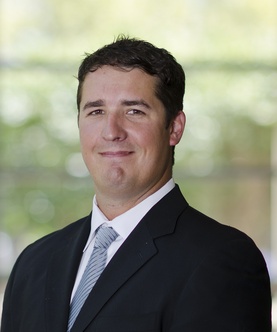
Safety, success and shanking golf balls
By Chris Schmidt
Mike Hammer, senior superintendent with Clark Construction, has 14 years of experience in the construction industry. He earned his bachelor’s degree in government at Georgetown University, is OSHA trained and is a CCHEST safety trained supervisor. In his position, he has worked on diverse projects that range from an academic campus, to an insulin manufacturing facility, to a ballpark. Join Construction Superintendent as Hammer discusses his take on the future of the industry, steps to success in the field and what he”d be lost without on the jobsite.
(Q) What steps have you taken to become successful in the field?
I’ve found a lot of the skills I developed playing college lacrosse apply to working in the field. Time management, team work and competition are three attributes that stand out as having a direct correlation between the two and I believe have made me successful.
(Q) Explain what CCHEST safety training is and how you incorporate it into Clark’s regular safety program.
CCHEST safety training is a program designed for individuals who demonstrate competency and work in health and safety activities devoted to the prevention of construction illnesses and injuries. Safety is one of Clark’s core values and we strive for zero incidents and zero injuries, so the CCHEST program really does align with our safety program.
On jobsites, Clark reinforces safety culture and program through Safety Stand Downs, which serve as a forum for focused safety discussions amongst the entire project team. The meetings also afford craftworkers the opportunity to review Clark’s safety policies and expectations, as well as project-specific safety goals.
(Q) In the course of your career, which project has been your favorite to supervise and why?
My favorite project to work on was Nationals Park, Washington, D.C. I participated in all of the different aspects over the course of the project and I gained a lot of valuable experience. Nationals Park also is one of those legacy projects that will be around for a long time. I can take my family to ballgames and tell some interesting construction stories.
(Q) Share a particular challenge you”ve faced on a construction project and how you overcame it.
I was the superintendent of a project where we added two new stories on top of an existing, occupied office building in Washington, D.C., and performed a phased renovation of all the space. The site was small and the scope was difficult. It took a lot of off hours working and planning with not only the subcontractors, but also the tenants. We had to schedule everything down to the minute and consider the smallest details, but in the end it was a successful project.
(Q) Detail some of the unique measures involved on projects that incorporate blast requirements.
Most of the blast requirements that I have worked with were more on the design side. However, we did have one project in which every concrete column had to have a steel blast jacket installed. The majority of the columns were not typical so we had to go through columns individually and size them correctly so the steel could be made ahead of time and not slow down the concrete operation.
(Q) Talk about the most memorable project you”ve worked on and why it stands out in your mind.
My most memorable project is my first project: a 12-story law firm build-to-suit in downtown Washington, D.C. My boss was a great mentor with a lot of patience. Everything was new, I was learning about the industry by being immersed in it every day and I started to understand what it took to be a superintendent on a large project.
(Q) What is the best piece of advice you”ve received in your career and what words of wisdom would you, in turn, pass along to future superintendents?
“Trust but verify” and “always be a person of your word.”
(Q) Which tool would you be lost without on the jobsite and why?
There are two: a field book and tape measure. The field book allows me to take notes all day long while I am in the field and then prioritize lists for that day and the next. Plus, there are a lot of moving parts on the job and, if I don’t write things down, there is a chance I will forget it. The tape measure is vital to working in the field because you always need to be able to double check the work that is being put into place. It goes along with the trust but verify philosophy.
(Q) If you could do anything else for a living besides construction, what would that be?
In a dream world, I’d be a professional golfer. In reality, something in development. I feel as though development has a lot of the same rewards as construction in being able to physically see the results of your work.
(Q) When you”re not wearing a hardhat on the job, where can Construction Superintendent readers find you?
Going to the pool or beach with my family, playing sports with my kids or on the golf course shanking balls into the woods.
(Q) Where do you see the industry heading? — What do you think are the biggest challenges of the industry?
I see prefabrication being the way of the future in construction.
With the workforce’s aging population and fewer people entering the trades, the industry needs to 1) develop more recruitment strategies and 2) find ways to produce with fewer people.


 Join our thriving community of 70,000+ superintendents and trade professionals on LinkedIn!
Join our thriving community of 70,000+ superintendents and trade professionals on LinkedIn! Search our job board for your next opportunity, or post an opening within your company.
Search our job board for your next opportunity, or post an opening within your company. Subscribe to our monthly
Construction Superintendent eNewsletter and stay current.
Subscribe to our monthly
Construction Superintendent eNewsletter and stay current.